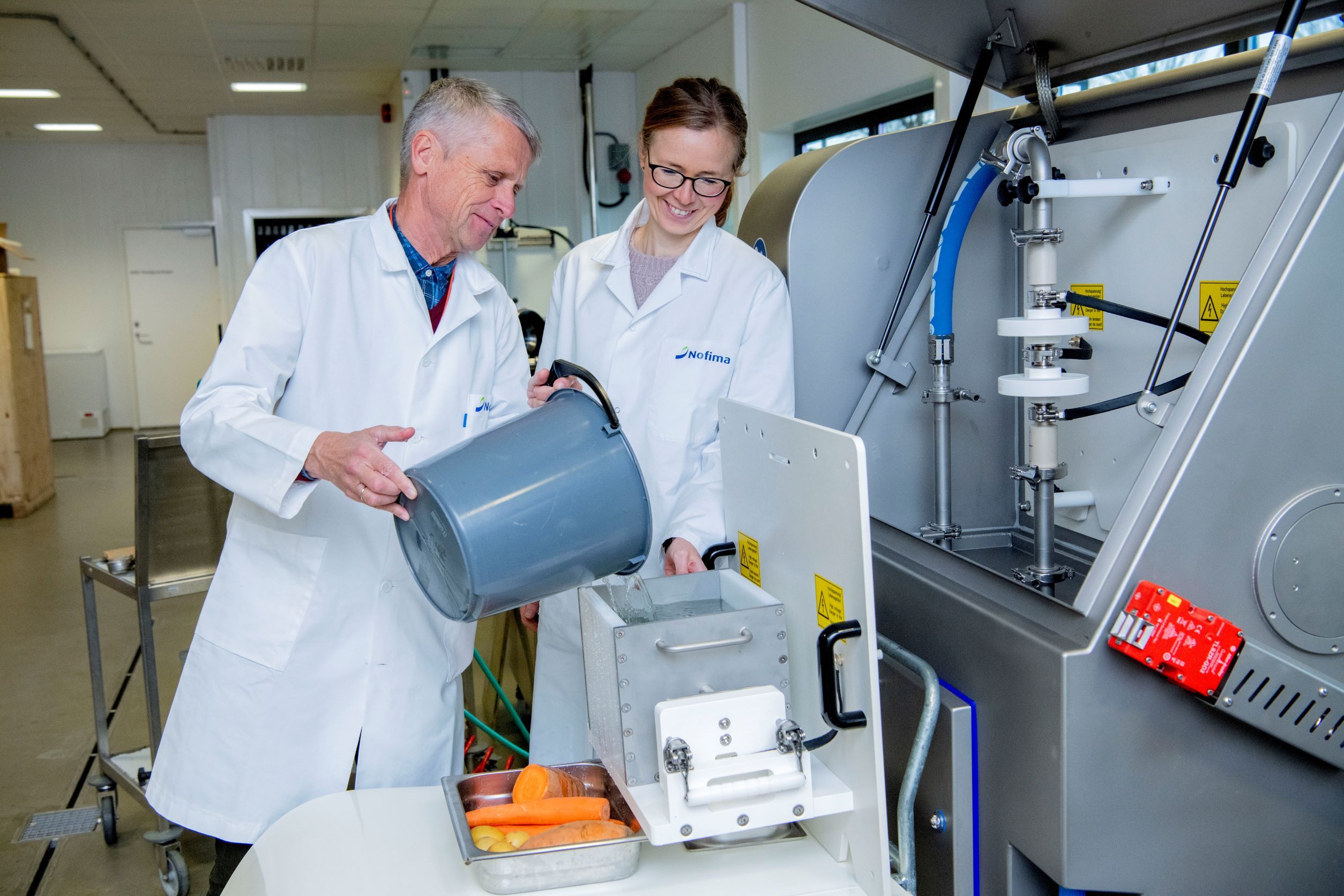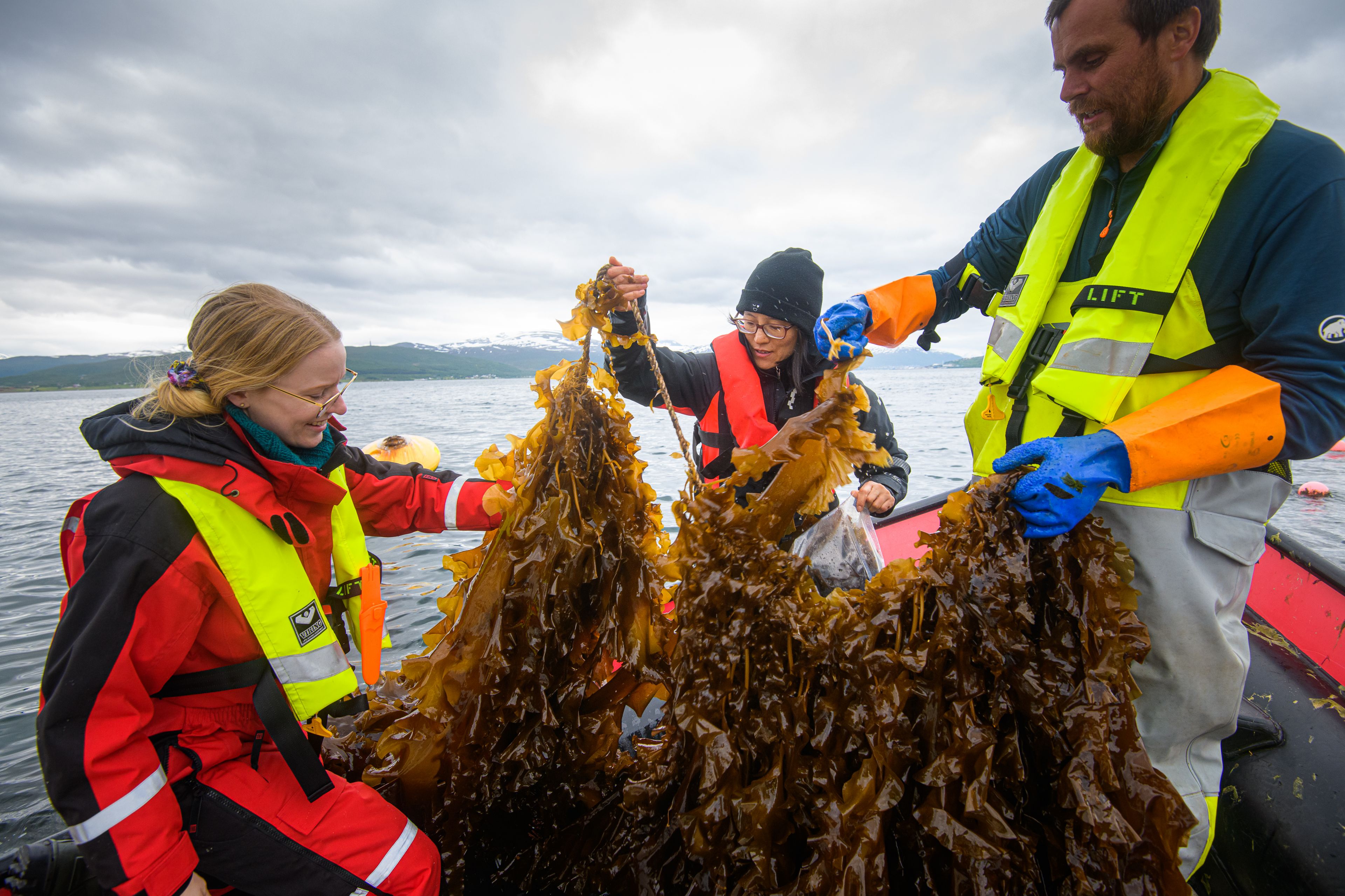
Nofima have started with some of their trials in work package 1. Marthe J. Blikra from Nofima gives us a summary of their latest trial trying to reduce iodine in kelp by using short electricity pulses:
Iodine is a mineral we need, but in moderate amounts (150-225 microgram/day for adults). Kelp is a very rich source of iodine, and dried kelp contain much more iodine than any other foods (around 2.000-10.000 micrograms/kilogram). Thus, reducing the content to a predictably low level is one of the bottlenecks for increasing the amount of kelp in the everyday diet.

Harvesting of cultivated sugar kelp in Kraknes near Tromsø. From left to right: Marthe J. Blikra, Xinxin Wang and Tor Evensen. © Nofima. Photo credit: Lars Åke Andersen
The iodine content in kelp can be reduced by processing technology, and several techniques are tried and tested. Some are highly effective, such as blanching at mild temperatures (45 °C or higher), which can lead to around 90 % reduction in the iodine content of sugar kelp (Nielsen et al., 2020). However, in an industrial scale, the use of energy and water should be as low as possible, both in an economic and environmental perspective. Other methods should therefore also be explored.
In the SusKelpFood project, we at Nofima tested using pulsed electric field (PEF) processing – a novel «greener» technology, to see the effect on iodine reduction. In practice, kelp is then placed in a chamber with water in our PEF machine, and PEF sends pulses of energy to the kelp which perforate the kelp tissue. The hypothesis is that water-soluble iodine is allowed to leak out through the perforations into the surrounding liquid much more efficiently than without PEF, while avoiding using energy for heating water. In our study, we found a reduction in iodine of around 40 % after PEF treatments, compared to soaking alone. This is still a lower reduction than for blanching. But, at the same time, the energy input was considerably lower, at less than 10 % of that needed for blanching. The economic feasibility of the process is therefore promising.

The Pulsed electric field (PEF) machine, here used to treat vegetables. From left to right: Torstein Skåra and Tone Mari Rode. © Nofima. Photo credit: Jan Inge Haga
We want to continue working with PEF and refine and fine tune the method. Hopefully we can achieve an even better result in the future.
The findings are currently under publication in a scientific journal, and the results will also be presented at the Seaweed for Health conference in Spain August 2022.